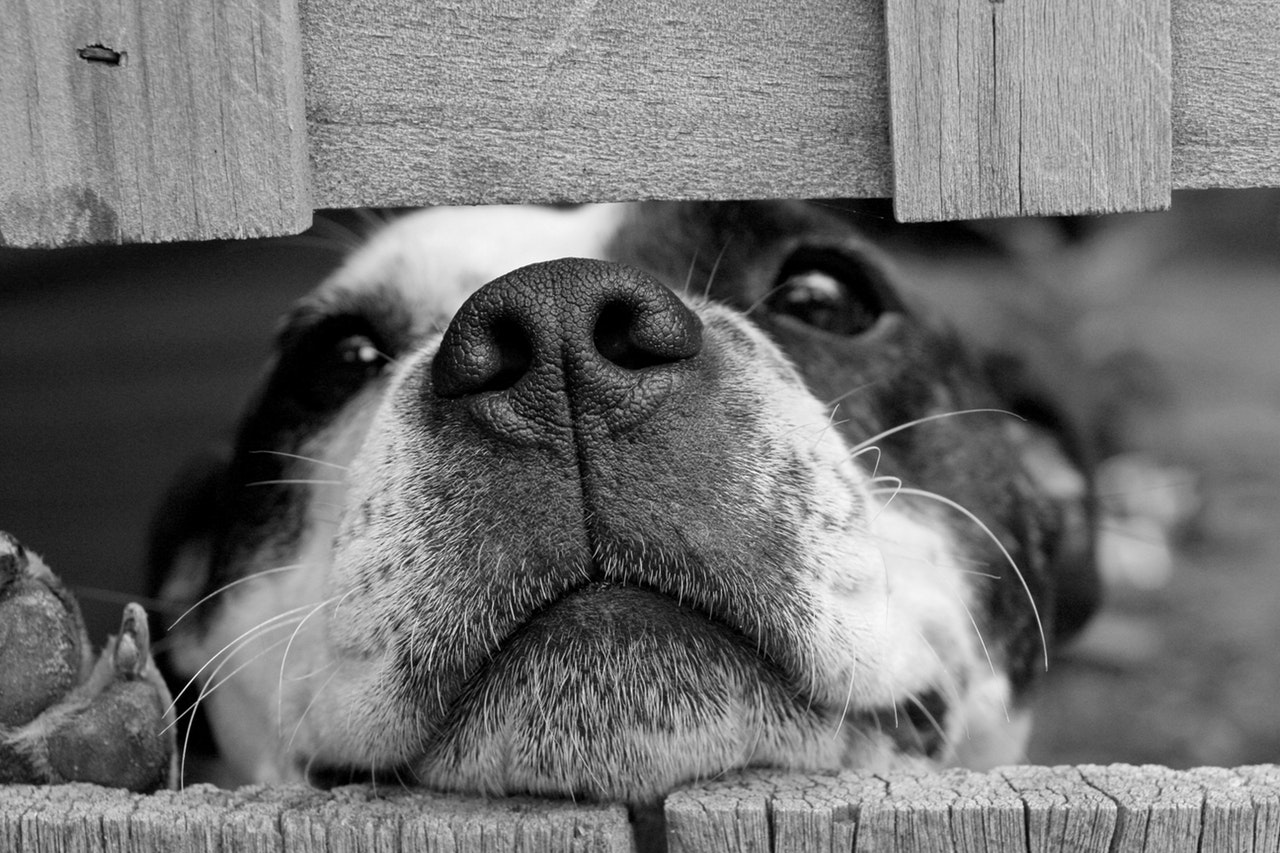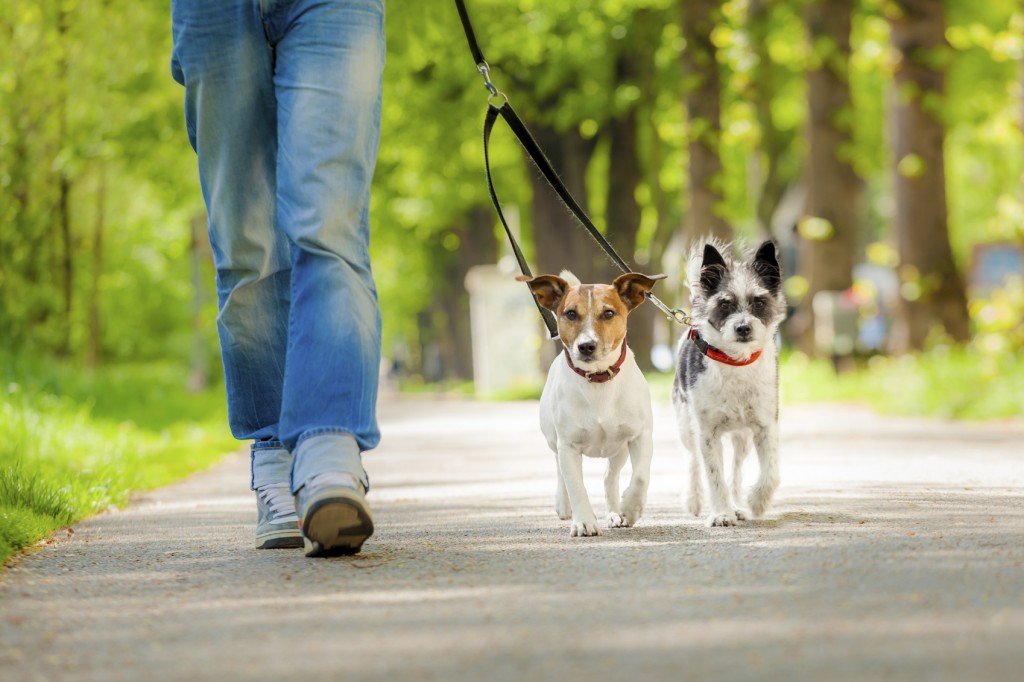If you’ve spent much time around dogs and puppies, then you’re aware that they love to chew on things. Canines have this compulsion to chew—sometimes they may crave a bite of your favorite shoes or pillows, while other times they’re happy to gnaw on trash, branches and other yummy things. However, there are some dogs that seem to prefer chewing cardboard.
Connect with a verified veterinarian in minutes. Licensed vets are available 24/7 to answer your questions. No need to worry about your furry family member.
Do you have a dog that loves to chew on cardboard? Can it be harmful to your dog? We’ll take a look at these and other questions on why some dogs have a penchant for paper and cardboard.
Why Do Dogs Chew and Eat Cardboard?
We all wonder at the taste of our canine companions when they take a dive in the waste basket. They manage to find some lovely tasty bits for snacks. When you come upon their mess afterwards, you wonder just what did they find so attractive in the trash? Whether it be food or cardboard, we pet parents can only shake our heads and wonder why. Carboard doesn’t taste good—at least not to us. But could our dogs love the taste of the cardboard? Only they can tell you, and they’re not talking! Maybe it’s the vintage of the cardboard. Was it hanging around the house for a while? Then it could have developed a taste your dog prefers—something like a fine wine that’s been aged to perfection.
Or maybe it’s the type of cardboard. Have you noticed your dog preferring a certain type of cardboard over others? For instance, does he prefer to gnaw and eat toilet paper rolls, or does he prefer cereal boxes? Maybe he even prefers the box from your last Amazon order! Only your dog knows why he may prefer certain types of cardboard over others. Have you noticed your dog has no preference? Does he seem to enjoy all types of cardboard? This can also be the case—some dogs just enjoy all types of cardboard, with no favorites. They just go for what’s available at the time and are not cardboard connoisseurs. Still, we have the question of why does my dog chew cardboard. We’ll cover this topic a little bit later in the article.
My Experience with a Dog Cardboard Chewer
I had a beautiful Golden Retriever Chow Chow mix, and his name was Pal. He truly was a pal to me and everyone. He loved most people at first sight. However, he could be quite the monster when it came to getting attention or getting his own way. One day, when I had to make a trip to the airport to pick up my then fiancé, Pal was going to stay home. He was fine staying home for a few hours on his own. He was a great guardian and protector. No one would get in the house while I was gone. However, this specific day, Pal decided he was absolutely going with me in the car on this trip. He was not going to be left home.
When I told Pal no, he had to stay home, he immediately began rampaging around the living room. Not only that, but he was searching for something to chew up and/or run with. He was rarely destructive, but when he wanted attention and/or to make a point, he would find something to chew up. That day, Pal found a roll of paper towels that I’d been using to clean the house. He pounced on that roll and started running around, then stopping and chewing off large wads and pieces and “throwing” them around the room. Well, you get the picture. He made quite a mess. Yes, I should have scolded him…and did a little bit but saw that all he wanted was to come along on the trip. So, I relented, and he jumped in the car with me to pick up my fiancé. Pal was a happy camper that day!

Review symptoms, medications & behavior to keep your pets healthy with a Vet Online in just minutes.
Ask a Vet Live NowMy Dog Loves to Chew Cardboard
If your dog enjoys chewing up cardboard, you’re not alone. This is a common problem. If you do a quick Google search, you’ll come up with a long list of people wondering about their dogs’ preference for cardboard chewing. The most common question is “Can eating cardboard hurt my dog?” The short answer is no. Chewing or eating cardboard, especially if it’s only done once in a while, will not harm your dog. Most cardboard is non-toxic, so it will not harm your dog; however, if your pup likes to chew and eat cardboard often and in bulk, this could pose potential health issues.
Health Issues & Chewing and/or Eating Cardboard
While chewing and eating cardboard once in a while isn’t usually a problem for most dogs, it can be a problem if done habitually or in bulk. What are the side effects of dog eating cardboard? Side effects from eating cardboard can include:
- Lethargy
- Constipation
- Straining during a bowel movement
- Burping
- Vomiting
- Diarrhea
- Fever (over 103 F)
- Abdominal pain and/or distention
These could be signs that your pup has an intestinal blockage or obstruction, which can be a life-threatening medical emergency. If you notice these symptoms in your dog, be sure to call the vet and make an appointment as soon as possible. Treatment for an intestinal blockage may involve your dog taking stool softeners or even having surgery, depending on the level of blockage and the seriousness of the symptoms. If your pup seems to pass the cardboard through without any problem, then chances are he’s OK. However, if your canine companion is determined to munch on cardboard, then you’ll need to keep an eye on him and watch for these symptoms.
My dog ate a small piece of cardboard—is that a problem? Probably not, but still keep an eye on him and watch for any possible symptoms that he’s having a tummy or digestive tract issue. My dog ate cardboard vomiting—should I worry? Yes, this is a sign that he’s having trouble. At this point, it’s a good idea to call the vet and see if you need to take your fur baby in for an exam. Another health issue to watch for is pica. Pica is medical disorder where people or animals eat things that are not food. They may be hungry for dirt, cardboard, etc. In dogs, this may be a sign of underlying medial issues including:
- Behavioral issues (separation anxiety, stress, boredom, depression)
- Parasite infestation (such as worms)
- Hunger
- Malnutrition or nutritional deficiency
Here are some questions to ask yourself if you’re worried about your pup’s cardboard habit:
- Is my fur baby getting enough to eat?
- Is he getting enough nutrition from his food?
- Does he have any other signs of behavioral issues?
- Are you worried about his desire for cardboard and the possible effects on his health?
If you suspect your dog may have an underlying health issue, this is a great time to make an appointment with your veterinarian. The vet will do a full physical and possibly blood tests to look for possible health issues. If your dog’s healthy and all’s well, then he may just like to chew and eat cardboard. That’s the only reason he does it!
Cardboard Chewing Prevention in Dogs
If your dog is otherwise healthy, but you really don’t want him to eat cardboard, there are some things you can do to prevent this habit.
1. Exchange his favorite cardboard for a healthy chew: you might try to get him to chew on something like this Pawstruck Monster Braid Bully Stick for Dogs. This is a huge stick for dogs who love to chew. The braid is long-lasting and made of 8 different strands. It’s sure to keep the most determined chewers busy and away from cardboard, at least for a while. The chew contains no artificial ingredients, no hormones and no chemicals. They’re made from free range, grass-fed beef and are low in fat.
2. Boredom and stress chewing: if your dog seems to be suffering from boredom and stress, then giving him more attention, plenty of exercise and mental stimulation may do just the trick. He may leave off cardboard if you give him lots of attention each day, take him for long walks to wear off energy and anxiety, and give him dog puzzles to help keep his mind stimulated and occupied. You might try a toy such as the Pet Zone IQ Treat Ball. This is sure to keep your dog mentally and physically active! Just fill it with his favorite treats or kibble and let him enjoy. Most small treats will fit inside this ball puzzle—and it’s made of hard plastic, that you can disassemble easily and clean. This is the perfect puzzle for small to medium dogs.
3. Make cardboard inaccessible: this can be a challenge if your pup is a dog determined to find and chew cardboard. You can try to keep bathroom doors shut to keep your fur baby from getting toilet paper roles. In other parts of the house, you may need to opt for waste baskets that are dog-proof. In the kitchen, you could choose the Simplehuman 45 liter / 11.9 Gallon Rectangular Step Can with Liner Pocket. This heavy wastebasket is difficult for dogs to get into. In fact, the only way to open the lid is to step on the heavy steel foot pedal, which VERY quietly opens and closes the lid. For smaller spaces, such as a bathroom or bedroom, you might consider the Bino Stainless Steel 1.3 Gallon / 5 Liter Round Step Trash Can. This wastebasket comes in 6 different colors and is perfect for small spaces. It’s one that your fur baby will have a very hard time getting into for his favorite cardboard!
If your fur baby just loves to chew and eat cardboard, and doesn’t seem to suffer any ill effects, then it’s probably OK to indulge his habit once in a while. However, if you’re worried his habit may be causing some health problems or symptoms that are concerning, then get your dog to the vet for an exam. It may be necessary to stop his habit with some healthy alternatives and by putting a lid, so to speak, on his favorite cardboard obsession.
Connect with a verified veterinarian in minutes. Licensed vets are available 24/7 to answer your questions. No need to worry about your furry family member.

Tom
Tom has always loved to write since he was little - he wanted to be either a writer or a veterinary doctor, but he ended up being a professional writer while most of his works are based on animals. He was born in San Francisco but later moved to Texas to continue his job as a writer. He graduated from the University of San Francisco where he studied biotechnology. He is happily married and a soon to be father!
Review symptoms, medications & behavior to keep your pets healthy with a Vet Online in just minutes.
Ask a Vet Live Now



